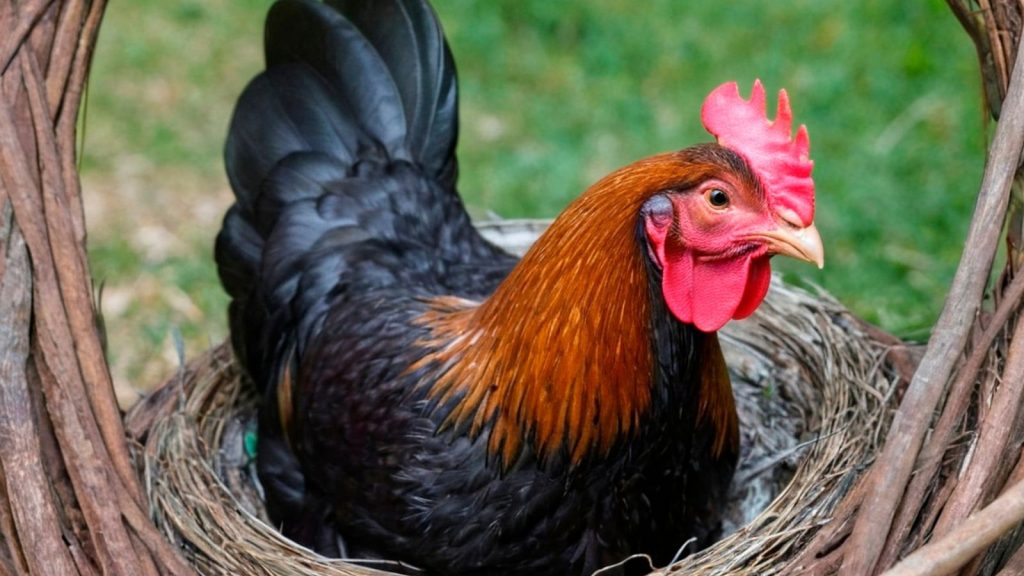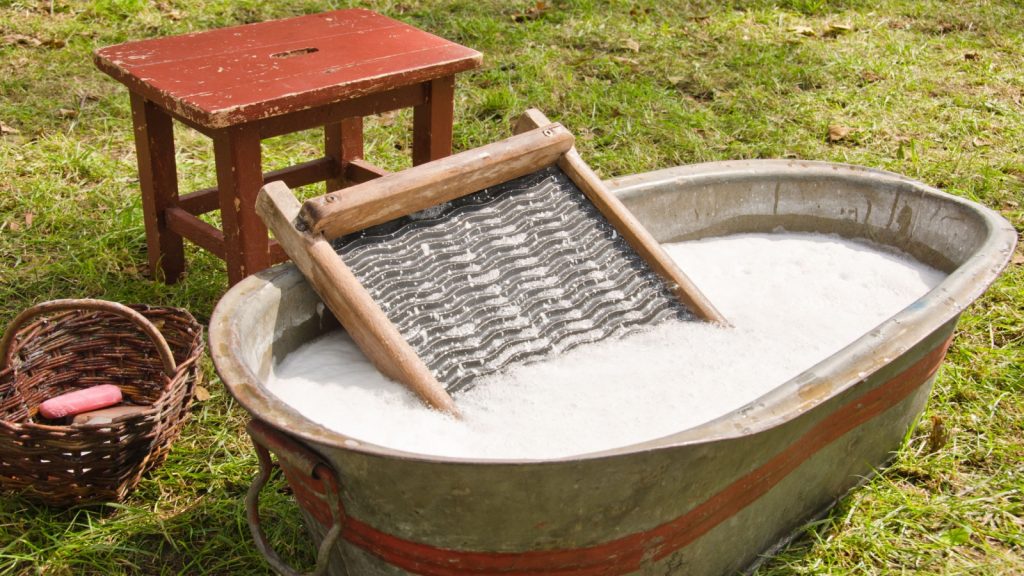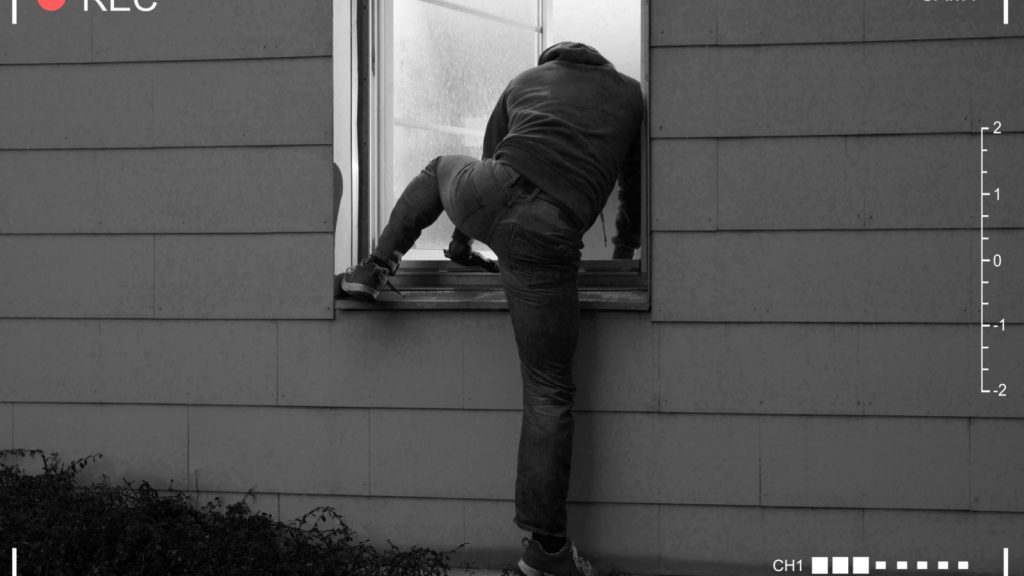Many homesteaders worry about their chickens during the cold winter months, especially when temperatures drop below freezing. The good news is that chickens are remarkably hardy birds, equipped with natural insulation that serves them well in cold weather. With the right setup and care practices, you can keep your flock comfortable through winter without resorting to dangerous heat lamps.
We’ve raised chickens for many years in our cold climate, and I’ve learned that proper preparation is key. After some trial and error (and a few stressful winter nights), we’ve developed a system that keeps our birds healthy and productive even during the harshest months.
Understanding Chicken Cold Tolerance
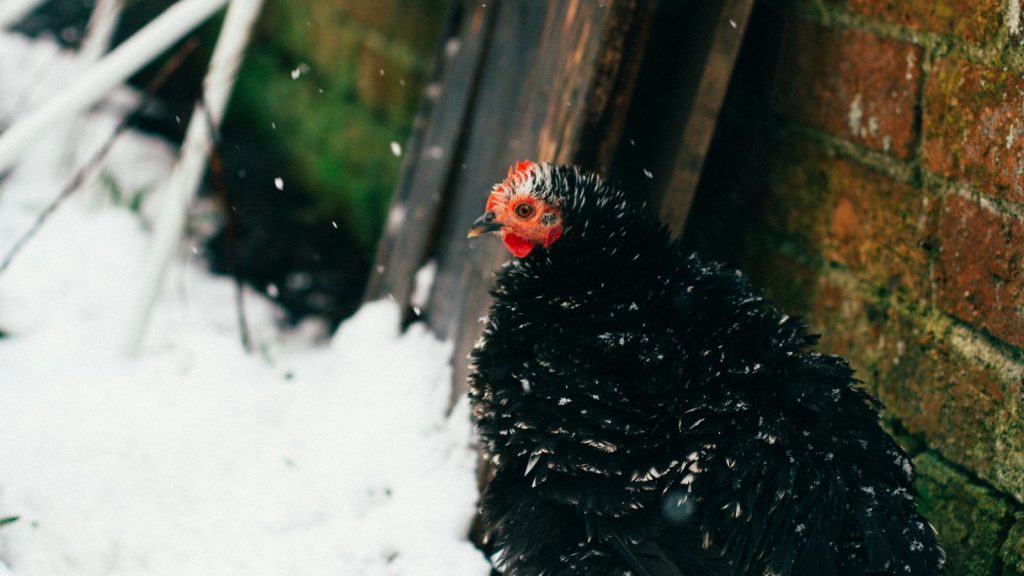
Chickens have impressive natural defenses against cold. Their feathers provide excellent insulation – they fluff them up to create air pockets that trap body heat. Many breeds also grow extra downy feathers during their fall molt specifically to prepare for winter. Cold-hardy breeds like Buff Orpingtons, Plymouth Rocks, and Wyandottes have been bred for generations to thrive in colder climates.
Unlike humans, chickens don’t have sweat glands, so they actually handle cold better than heat. The ideal temperature range for chickens is between 70-75°F, but most breeds do perfectly fine down to 20°F or even lower with proper preparation.
When selecting birds for cold climates, consider breeds with smaller combs and wattles, as these extremities are prone to frostbite. Breeds like Brahmas, Australorps, and New Hampshire Reds typically fare better than Mediterranean breeds like Leghorns.
Coop Ventilation vs. Drafts
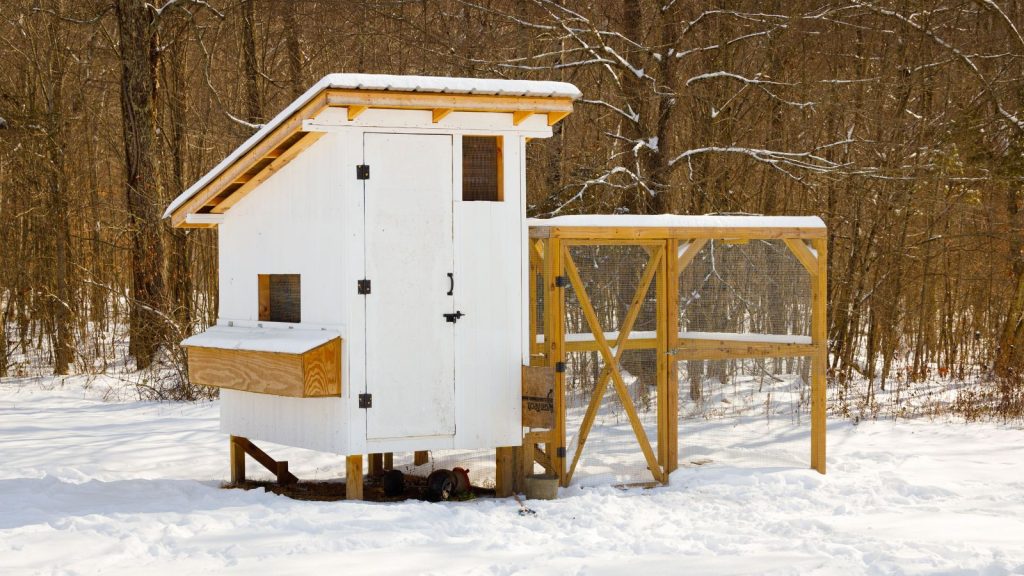
One of the biggest misconceptions is that a sealed-up coop is a warm coop. In reality, proper ventilation is critical for winter chicken health. A well-ventilated coop allows moisture from breath and droppings to escape while preventing dangerous ammonia buildup.
There’s an important distinction between ventilation and drafts. Ventilation occurs above the birds’ roosting height, while drafts blow directly onto them. While drafts can chill your chickens and should be eliminated, proper ventilation actually helps keep them healthy.
Our coop has vents installed near the ceiling that we keep open year-round. During particularly harsh weather, we may partially close these vents, but never completely. The key is to provide ventilation without creating direct drafts on your roosting birds.
Deep Litter Method for Natural Heat
The deep litter method has been a game-changer for our winter chicken keeping. This traditional technique uses the natural decomposition process of bedding material and chicken droppings to generate heat while creating a compost system right in your coop.
To implement the deep litter method:
- Start with a 4-6 inch layer of clean, dry bedding in early fall (pine shavings work well).
- Rather than completely cleaning the coop, add fresh bedding on top as needed.
- Turn the bedding occasionally with a pitchfork to aerate it and speed decomposition.
- By winter, you’ll have a thick, composting layer that generates warmth from the bottom up.
Last winter, we measured the temperature of our deep litter – it was consistently 10-12°F warmer than the outside air. Plus, the chickens enjoy scratching in it, which keeps them active and generates body heat.
The deep litter method also means less cleaning in cold weather, and by spring, you’ll have excellent compost material for your garden beds.
Optimal Roosting Arrangements
Chickens keep warm at night by huddling together on roosts, sharing body heat. Our roost bars are 2-3 inches in diameter – wide enough for chickens to cover their feet with their feathers while sleeping, protecting against frostbite.
We position our roosts in a stair-step formation, with the highest roost at the back of the coop. This arrangement takes advantage of rising heat while allowing all chickens access to roosting space without jumping from excessive heights.
The roosting area should be away from windows and doors to minimize exposure to cold surfaces. We installed our roost bars about 2 feet from the coop ceiling, giving birds enough head room while keeping them in the warmer air that rises to the top of the coop.
Roosting space is crucial – each chicken needs 8-10 inches of roost bar. Overcrowding leads to stress and potential health issues, while too much space doesn’t allow for effective communal warming.
Feeding Strategies for Winter Warmth
A chicken’s metabolism acts like an internal furnace during cold weather. Digestion generates body heat, especially when breaking down proteins and certain carbohydrates.
We adjust our feeding practices in winter to support this natural heating system:
- Feed chickens their regular feed in the late afternoon, when they’ll need energy to stay warm overnight.
- Supplement with cracked corn or scratch grains as an evening treat – the digestion of these high-carbohydrate foods produces heat throughout the night.
- Consider mixing a small amount of black oil sunflower seeds into feed for extra protein and fat.
Contrary to some advice, don’t drastically increase feed amounts or switch entirely to corn. This can unbalance their diet and cause digestive issues. Instead, maintain their regular layer feed as the main component, with supplements making up no more than 10-20% of their diet.
We’ve found that suet cakes (made with beef fat, seeds, and grains) make excellent occasional treats during the coldest days, providing concentrated energy.
Water Management in Freezing Conditions
Providing unfrozen water is one of the biggest winter chicken-keeping challenges. Hydration is essential for egg production and overall health, yet many chicken keepers struggle with constantly frozen waterers.
After trying various methods, here’s what works for us:
- Use black rubber feed pans instead of plastic or metal waterers – they absorb solar heat and resist cracking.
- Bring warm water out to the coop twice daily during the coldest spells.
- For extended freezes, we use a water heater base designed for poultry waterers. Though it uses electricity, it’s far safer than heat lamps.
If you don’t have electricity in your coop, try these alternatives:
- Float a ping pong ball in the water to disrupt ice formation
- Insulate waterers with old towels or bubble wrap
- Use deeper containers which take longer to freeze solid
Remember that snow is not an adequate water source – chickens need liquid water to properly digest their food.
Windbreaks and Run Protection
While a properly ventilated coop is essential, chickens also benefit from outdoor time even in winter. We’ve created a series of windbreaks around our chicken run to make this possible.
Using reclaimed wood pallets and plastic sheeting, we built simple barriers on the north and west sides of the run where prevailing winds hit hardest. We left the south side open to allow warming sunlight to penetrate.
Covering part of the run with clear plastic sheeting creates a greenhouse effect on sunny days, giving chickens a warmer area to scratch and dust bathe. In one corner, we stacked straw bales to create a windproof nook that chickens love to congregate in during cold days.
These simple structures provide protection without creating an airtight environment that would trap moisture and lead to respiratory issues.
Safe Alternatives to Heat Lamps
Heat lamps are responsible for numerous coop fires each year. We avoid them completely and instead use safer warming methods when necessary:
- Heated roost bars that gently warm chickens’ feet (using much less electricity than heat lamps)
- Ceramic heat emitters which provide warmth without dangerous bright light
- Microwavable heating pads designed for pets, placed under bedding in nesting boxes
For most healthy, full-feathered adult chickens, these additional heat sources aren’t necessary. We reserve them for extreme weather events or rehabilitating sick birds.
Frostbite Prevention for Combs and Wattles
Large-combed breeds are susceptible to frostbite in sub-zero temperatures. To protect our roosters and hens with larger combs, we apply a thin layer of petroleum jelly to these areas before extreme cold snaps.
This simple measure creates a moisture barrier that helps prevent tissue freezing. We’ve found that consistent application during the coldest periods has virtually eliminated frostbite issues in our flock.
Winter Chicken Health Monitoring
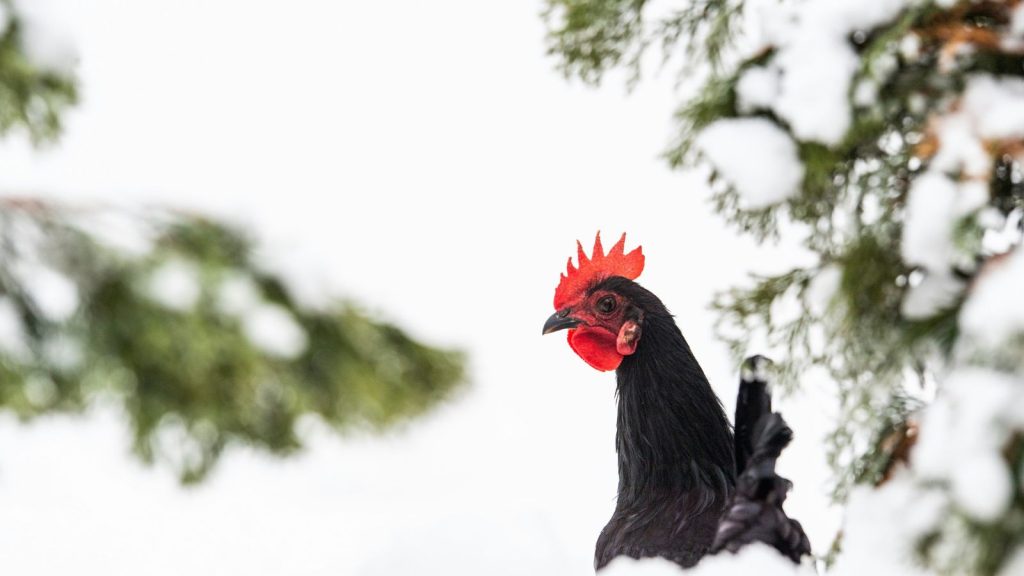
Winter requires vigilant observation of your flock. We check our chickens daily for:
- Bright, clear eyes and active behavior
- Smooth, uninjured combs and wattles
- Normal droppings
- Regular eating and drinking
- Proper weight (feel their keel bone – it shouldn’t be too prominent)
Early intervention is critical – a chicken showing signs of illness needs immediate attention in winter when their systems are already working hard to stay warm.
One winter, we noticed a hen sitting alone, fluffed up and inactive. By bringing her inside to a quarantine area and addressing her respiratory infection promptly, we prevented it from spreading through the entire flock during a vulnerable time.
What NOT to Do: Avoiding Harmful Winter Practices
Despite good intentions, some common winter chicken-keeping practices can actually harm your flock. Here are the approaches we avoid and why:
No Chicken Sweaters or Clothing
Those adorable chicken sweaters you see online might seem like a good idea, but they can cause serious problems for your birds. Chickens regulate their temperature by fluffing and settling their feathers. A sweater prevents this natural insulation system from working properly.
Even worse, sweaters can get wet from snow or rain and then freeze, actually causing hypothermia instead of preventing it. We had a neighbor who tried chicken sweaters one winter, and her birds developed skin issues and couldn’t properly dust bathe to control parasites.
Chickens have evolved over thousands of years to handle cold temperatures with their natural feather coats. Unless you have a rescue bird with significant feather loss, skip the sweaters and focus on proper coop design instead.
Avoid Completely Sealed Coops
Some chicken keepers mistakenly think sealing every crack in the coop will keep birds warmer. We made this error our first winter and quickly discovered that the resulting humidity and ammonia buildup caused respiratory infections in our flock.
The moisture from chicken breath and droppings needs somewhere to go. Without proper ventilation, this moisture condenses on coop surfaces, making birds damp and cold – exactly what you’re trying to prevent.
Don’t Use Indoor Heat Sources Without Precautions
Beyond the fire hazard of heat lamps, suddenly introducing or removing a heat source can shock chickens’ systems. If a heater fails during a particularly cold night, birds won’t be acclimated to the temperature drop and could suffer or even die from the sudden change.
We’ve heard too many stories of coop fires started by heat lamps to ever recommend them. If you absolutely must use supplemental heat during extreme weather, only use products specifically designed for agricultural settings with proper safety features.
Skip the Petroleum Jelly Overload
While a thin layer of petroleum jelly can help prevent frostbite on combs and wattles during extreme cold, too much can actually trap moisture against the skin and increase frostbite risk. We’ve seen some chicken keepers apply thick globs thinking more is better, but this just makes feathers sticky and less effective at insulation.
Apply petroleum jelly sparingly, only to exposed skin areas, and only during the coldest periods.
Don’t Keep Birds Confined All Winter
Some chicken keepers make the mistake of keeping their birds cooped up all winter long. While it might seem kinder to keep them inside during cold weather, chickens need exercise to maintain good circulation and temperature regulation.
Our chickens go outside almost every day of the winter, even if just for a short time. The physical activity and mental stimulation are crucial for their health. We only keep them inside during extreme weather events or blizzard conditions.
James is a former logistics coordinator and wilderness safety instructor, whose practical experience taught him the value of sensible preparedness and calm resilience. Passionate about self-reliance, James teaches everyday skills—like water purification, emergency communication, and outdoor safety—to help people confidently handle life's disruptions without fear or overwhelm. His approachable style combines real-world insights with relatable, personal stories and experiences.
